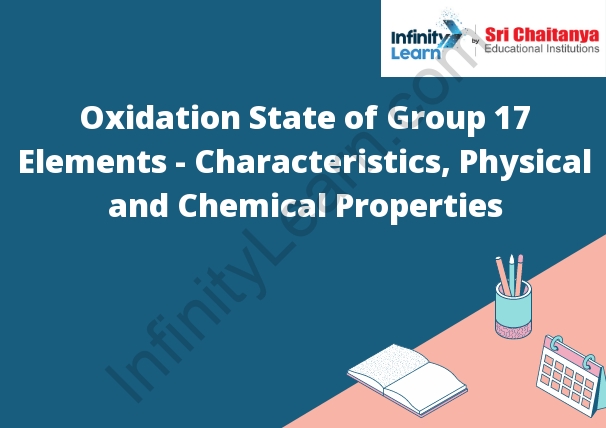Table of Contents
An Introduction to Group 17 Elements ; General characteristics of Group 17 elements
Group 17 of the periodic table consists of the halogens. These elements are highly reactive and have many similarities. They are all diatomic molecules, meaning they exist as pairs of atoms. They are all colorless and odorless. They are all highly soluble in water. They all have relatively high melting and boiling points. They all have low densities.
The most important similarity between the elements in Group 17 is their reactivity. All of the elements are highly reactive and can easily form bonds with other atoms. This reactivity makes them useful in many applications, such as in disinfectants and cleaning products.

What are Halogens?
Halogens are a group of elements in the periodic table that include fluorine, chlorine, bromine, iodine, and astatine. These elements are all highly reactive and share similar chemical properties. They are typically found in nature as salts.
Oxidation State
Oxidation state is a measure of the degree of oxidation of an atom in a molecule. The oxidation state of an atom is generally determined by the number of electrons that atom has lost or gained.
Physical Properties of Matter
The physical properties of matter include its state (solid, liquid, gas), density, mass, and volume. Matter can exist in three different states, solid, liquid, and gas, depending on the temperature and pressure. The density of a substance is its mass per unit volume. The mass of a substance is the amount of matter it contains, and the volume is the amount of space it occupies.
Chemical Properties of Halogens
The halogens are a group of elements that all have similar chemical properties. They are all very reactive and all have one or more electrons in their outermost shells that they are willing to share. This makes them very good at bonding with other elements, which is why they are found in many compounds.
1. Characteristics of Halogen Family
The halogen family is a group of elements that have similar chemical and physical properties. The members of this family are fluorine, chlorine, bromine, and iodine.
These elements are all non-metals, and they all have a valence of 1. They are all very reactive, and they all form diatomic molecules in their elemental form.
The halogen family is found in the periodic table in group 17, and they are all located in the rightmost column.
2. Electronic Configuration of an Atom
The electronic configuration of an atom is the arrangement of electrons in shells and subshells. Electrons are placed in the lowest possible energy level. The electronic configuration of an atom can be represented by the element’s symbol, followed by the number of protons and electrons in the atom. For example, the electronic configuration of an atom of carbon is written as:
C: 1s2 2s2 2p2
The number 1 in front of the s2 indicates that the first shell has two electrons. The number 2 in front of the s2 and the p2 indicates that the second shell has two electrons and the third subshell has two electrons.
3. Electronegativity of Halogen Family
The electronegativity of the halogen family is 3.0.
Explain Relative Reactivity of Group 1A Elements
The Group 1A elements are the most reactive elements on the periodic table. They are highly reactive because they are very good at losing electrons and forming ions.









